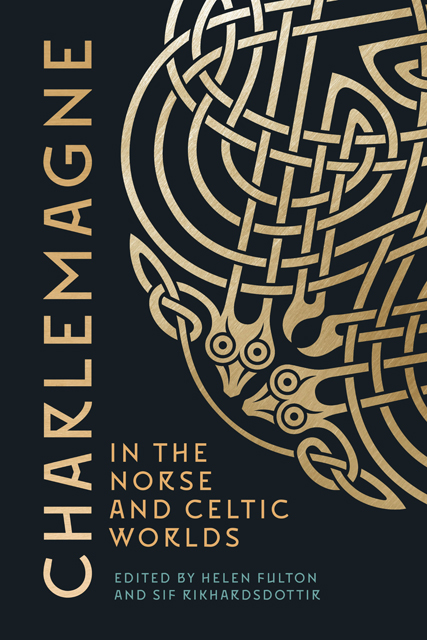Book contents
- Frontmatter
- Contents
- List of Maps and Figures
- List of Contributors
- General Preface: Charlemagne: A European Icon
- Acknowledgements
- Map
- Introduction: Transmission of Charlemagne in Scandinavia, Wales, and Ireland
- Part I The Norse Charlemagne
- Part II The Celtic Charlemagne
- Bibliography
- Index
- Bristol Studies in Medieval Cultures
4 - The Impact of Charlemagne on the Native Literary Tradition in the North
Published online by Cambridge University Press: 08 June 2023
- Frontmatter
- Contents
- List of Maps and Figures
- List of Contributors
- General Preface: Charlemagne: A European Icon
- Acknowledgements
- Map
- Introduction: Transmission of Charlemagne in Scandinavia, Wales, and Ireland
- Part I The Norse Charlemagne
- Part II The Celtic Charlemagne
- Bibliography
- Index
- Bristol Studies in Medieval Cultures
Summary
This chapter traces Charlemagne’s impact on the native literary tradition in Scandinavia. It discusses the extent to which the historical king and literary figure of Charlemagne, as represented in continental sources, has been adapted into literary works in the North. We study the degree of acculturation that has taken place in these adaptations and which functional role the inclusion of the historical character Charlemagne plays when he appears in medieval Scandinavian literature. Instead of focusing on works that are specifically devoted to the figure of Charlemagne, most importantly Karlamagnús saga (discussed in other chapters in the present volume), we will take a look at the use of the historical figure as woven into the Nordic literary tradition across various genres. For this reason, we divided this study into two main parts. In the first part, Jon Paul Heyne will focus on the impact of Charlemagne on the kings’ sagas, the royal histories of Norway. In the second part, Claudia Bornholdt will look at references to Charlemagne in the riddarasögur, that is, romances that were adapted from continental sources as well as some later indigenous Icelandic romances, ballads, and rímur.
A survey of the extant scholarship on Charlemagne in the North results in very few studies that go beyond discussions of the transmission and contents of Karlamagnús saga and the adaptations of the legend of Roland in the North. This chapter attempts to close this gap at least somewhat by surveying a significant corpus of indigenous Scandinavian literature. We present and discuss direct and indirect allusions to Charlemagne from the period of the rise of literary production in Scandinavia up to the later Middle Ages, covering the royal histories, the first translations of continental courtly romances, and later indigenous literary compositions in both prose and verse.
Part I
In this first section, we will examine Charlemagne, or the Norse-Icelandic perception of Charlemagne, as depicted in the royal histories of Norway (c. 1130–1230). We have a handful of references to Charlemagne in the kings’ sagas, which have been noted and discussed previously in scholarship concerned with the transmission of texts from the continent to Norway and Iceland. There is a noticeable consensus among scholars that Charlemagne’s ‘popularity’ was widespread in the North.
- Type
- Chapter
- Information
- Charlemagne in the Norse and Celtic Worlds , pp. 66 - 90Publisher: Boydell & BrewerPrint publication year: 2022



